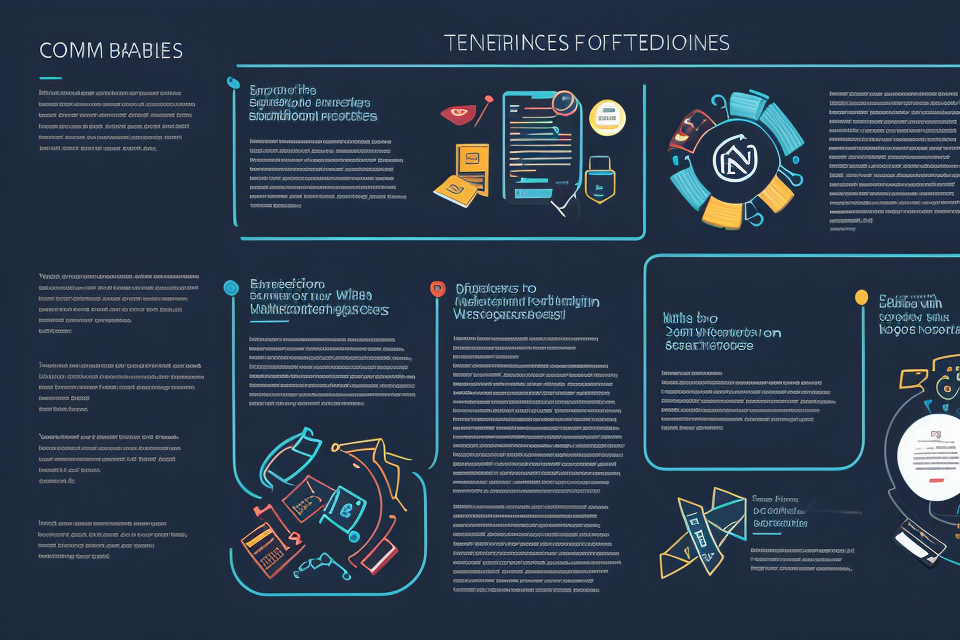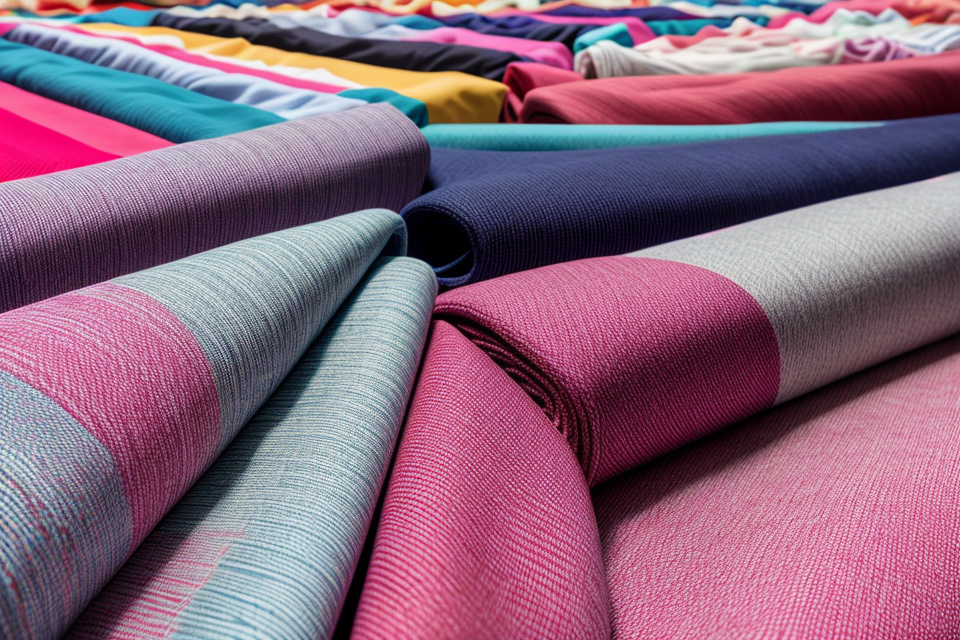
Uniforms are an essential part of many organizations, including schools, businesses, and military forces. But have you ever wondered about the materials that go into making these uniforms? In this article, we will explore the most common materials used to make uniforms and their unique properties. From durable polyester to soft cotton, we will dive into the world of uniform fabrics and discover what makes them ideal for different purposes. Whether you’re a fashion enthusiast or simply curious about the clothing we wear every day, this article will provide you with an interesting perspective on the world of uniforms.
Uniforms are typically made from durable materials that can withstand frequent wear and tear, such as polyester, cotton, and nylon. These materials are chosen for their strength, comfort, and ease of maintenance. Polyester is a popular choice because it is lightweight, wrinkle-resistant, and easy to clean. Cotton is also commonly used because it is soft and comfortable, but it can be more prone to wrinkling and staining. Nylon is another option that is strong and lightweight, but it can be less breathable than other materials. In addition to these materials, uniforms may also include other features such as reinforced stitching, waterproofing, and moisture-wicking technology to enhance their performance and durability.
Common Materials Used in Uniform Manufacturing
Polyester
Polyester is a popular material used in the manufacturing of uniforms due to its numerous advantages. It is a synthetic fabric that is made from polymers, which are derived from oil or coal. The polymers are processed to create a strong and durable fabric that is commonly used in the production of clothing, including uniforms.
Advantages
One of the main advantages of polyester is its durability. The fabric is strong and resilient, which makes it suitable for regular wear and tear. It can withstand wear and tear, and it is resistant to ripping and tearing, which makes it an ideal material for uniforms that are worn regularly.
Another advantage of polyester is its moisture-wicking properties. The fabric is designed to draw moisture away from the body, which helps to keep the wearer cool and comfortable. This is particularly useful for uniforms that are worn in hot and humid environments, such as in construction or landscaping.
Polyester is also resistant to wrinkles, which makes it easy to maintain. It does not require ironing, and it can be easily machine washed and dried. This makes it a convenient material for uniforms that need to be laundered regularly.
Disadvantages
While polyester has many advantages, it also has some disadvantages. One of the main disadvantages is that it can feel hot and sticky in warm weather. The fabric is designed to insulate the body, which can make it uncomfortable in hot temperatures.
Another disadvantage of polyester is that it is not environmentally friendly. The fabric is made from non-renewable resources, and it is not biodegradable. This means that it takes a long time to decompose, and it can harm the environment if it is not disposed of properly.
Overall, polyester is a popular material used in the manufacturing of uniforms due to its durability, moisture-wicking properties, and resistance to wrinkles. However, it has some disadvantages, such as its tendency to feel hot and sticky in warm weather and its environmental impact.
Cotton
- Cotton is a popular choice for uniforms due to its soft and comfortable feel against the skin.
- It is also a breathable fabric, which makes it ideal for those who work in hot and humid environments.
-
Cotton is easy to care for, as it can be machine washed and dried without losing its shape or color.
-
While cotton is a durable fabric, it is less so than polyester, which means that cotton uniforms may not last as long.
- Cotton can shrink or wrinkle easily, which can affect the overall appearance of the uniform. Proper care and maintenance can help minimize these issues.
Nylon
- Nylon is a popular choice for uniform manufacturing due to its lightweight nature. This property makes it ideal for individuals who need to wear uniforms for extended periods, as it reduces fatigue and discomfort.
- Nylon is also known for its resistance to wrinkles, which is an important feature for uniforms that need to maintain a professional appearance. This property ensures that the uniform stays looking neat and tidy, even after multiple wearings.
-
Another advantage of nylon is its moisture-wicking properties. This means that it can effectively draw sweat away from the body, keeping the wearer dry and comfortable. This is especially beneficial for uniforms worn in hot and humid environments.
-
One disadvantage of nylon is that it can be expensive compared to other materials. This is because the production process for nylon is more complex and requires specialized machinery.
- Additionally, nylon is not as strong as some other materials used in uniform manufacturing. This means that it may not be the best choice for uniforms that need to withstand heavy wear and tear. However, this can be mitigated by choosing a higher-quality nylon fabric or by reinforcing the uniform with additional materials.
Satin
- Smooth and shiny finish: Satin fabric has a glossy surface that gives it a smooth and shiny finish. This makes it a popular choice for uniforms as it gives a professional and polished look.
- Durable: Satin is a durable fabric that can withstand regular wear and tear. It is also resistant to wrinkles, which makes it a practical choice for uniforms that need to maintain a crisp appearance.
-
Easy to clean: Satin is a relatively easy fabric to clean. It can be machine washed and dried without any issues, making it a convenient choice for uniforms that need to be regularly laundered.
-
Can be heavy and hot to wear: Satin is a heavy fabric that can be hot to wear, especially in warmer climates. This can make it uncomfortable for wearers, especially those who are active or work in hot environments.
- More expensive than other materials: Satin is a luxury fabric that can be more expensive than other materials used in uniform manufacturing. This may make it less accessible for some organizations or individuals who are looking for more budget-friendly options.
Flame-resistant materials
Flame-resistant materials are commonly used in uniform manufacturing, particularly in industries where fire hazards are prevalent. These materials provide protection against fire-related accidents and incidents. Some of the advantages of using flame-resistant materials in uniforms are:
- Provide protection against fire hazards: Flame-resistant materials are designed to self-extinguish or resist burning when exposed to fire. This property makes them ideal for use in industries where there is a high risk of fire hazards, such as oil refineries, chemical plants, and construction sites.
- Used in industries where fire risk is high: The use of flame-resistant materials in uniforms is particularly common in industries where the risk of fire is high. This includes firefighters, electricians, welders, and other professions that work with or around open flames or electrical equipment.
However, there are also some disadvantages to using flame-resistant materials in uniforms. These include:
- Less comfortable than other materials: Flame-resistant materials are often stiff and less flexible than other materials, which can make them less comfortable to wear for extended periods. This can lead to discomfort and even fatigue for workers who wear these uniforms for long shifts.
- Can be more expensive: Flame-resistant materials are often more expensive than other materials, which can make them less accessible for some industries or organizations. Additionally, these materials may require special laundering or cleaning techniques, which can add to the overall cost of using them in uniforms.
Factors to Consider When Choosing Uniform Materials
Industry requirements
Examples
When choosing materials for uniforms, industry requirements play a significant role in determining the appropriate fabric to use. Here are some examples of how industry requirements impact the selection of uniform materials:
- Healthcare industry may require scrubs made of antimicrobial fabric:
- Healthcare workers are at a higher risk of exposure to various types of bacteria and viruses, which can be transmitted to patients.
- Antimicrobial fabrics are designed to inhibit the growth of bacteria and other microorganisms, which can help prevent the spread of infections.
- Scrubs made of antimicrobial fabric are often recommended for healthcare workers in hospitals, clinics, and other medical facilities.
- Chef uniforms may require fire-resistant materials:
- Chefs work with open flames and hot surfaces, which can pose a risk of fire.
- Fire-resistant materials are designed to self-extinguish or resist burning, which can help protect chefs from burn injuries.
- Chef uniforms made of fire-resistant materials are often required in commercial kitchens and other food service settings.
Other examples of industry requirements for uniform materials include:
- Retail industry may require uniforms made of breathable fabrics:
- Retail workers may be required to wear uniforms for extended periods, which can cause discomfort and overheating.
- Breathable fabrics are designed to allow airflow and moisture-wicking, which can help keep workers cool and comfortable.
- Uniforms made of breathable fabrics are often recommended for retail workers in hot environments.
- Construction industry may require uniforms made of durable fabrics:
- Construction workers are exposed to various hazards on the job site, including dust, debris, and rough handling.
- Durable fabrics are designed to withstand wear and tear, which can help protect workers from injury and damage.
- Uniforms made of durable fabrics are often required in construction and other heavy-duty industries.
Climate
- Lightweight and breathable materials for hot climates: When choosing materials for uniforms in hot climates, it is important to consider the heat and humidity levels. Lightweight and breathable materials such as cotton, linen, and mesh can help to keep the wearer cool and comfortable. These materials are also easy to clean and maintain, which is an added bonus.
* **Insulated and waterproof materials for cold climates:** In colder climates, it is important to choose materials that will keep the wearer warm and dry. Insulated materials such as fleece and down can provide warmth, while waterproof materials such as Gore-Tex can keep the wearer dry in wet conditions. These materials may be more expensive, but they are worth the investment for those who work in cold and wet environments.
Additionally, it is important to consider the type of work that the uniform will be used for. For example, if the uniform will be used for outdoor work in the sun, it is important to choose materials that will provide adequate sun protection. On the other hand, if the uniform will be used for indoor work, the focus may be more on comfort and durability.
Budget
When choosing the materials for making uniforms, budget is an important factor to consider. The cost of the materials can vary greatly depending on the type of fabric, quality, and quantity required. Some materials may be more expensive than others, which can affect the overall cost of the uniforms. It is important to balance the cost with the durability and functionality of the materials to ensure that the uniforms meet the needs of the organization or business.
Here are some examples of how budget can impact the choice of materials for making uniforms:
- Cotton vs. Polyester: Cotton is generally more expensive than polyester, but it is also more breathable and comfortable to wear. On the other hand, polyester is more durable and can withstand more wear and tear, making it a more cost-effective option in the long run.
- Solid colors vs. Prints: Solid colors are generally less expensive than prints, as they require less dye and are easier to produce. However, prints can add visual interest to the uniforms and can be more appealing to customers or employees.
- High-quality materials vs. Economy materials: High-quality materials, such as premium cotton or heavy-duty polyester, can be more expensive but can also last longer and provide better performance. Economy materials, on the other hand, may be more affordable but may not be as durable or functional.
It is important to consider the budget when choosing the materials for making uniforms, as it can have a significant impact on the overall cost of the uniforms. By balancing the cost with the durability and functionality of the materials, organizations or businesses can choose the best option for their needs while staying within their budget.
Brand image
When choosing the materials for uniforms, it is important to consider the brand image that the company wants to project. The appearance of the uniform can have a significant impact on how the company is perceived by customers and the public.
- Professional appearance: For companies that want to project a professional image, formal and classic materials may be appropriate. For example, a law firm may choose to use suits and ties for their male employees and conservative dresses or blouses for their female employees.
- Casual workplaces: In more casual workplaces, comfortable and relaxed materials may be more appropriate. For example, a tech company may choose to use t-shirts and jeans for their employees, or even allow them to wear casual clothes with the company logo on them.
It is important to note that the choice of materials should not only reflect the brand image but also be practical and comfortable for the employees who will be wearing them.
Sustainability
When it comes to choosing materials for uniforms, sustainability is an important factor to consider. Not only does it help reduce the environmental impact of the clothing industry, but it also ensures that the uniforms are made from materials that are durable and long-lasting. Here are some examples of how sustainability can be incorporated into the choice of materials for uniforms:
- Choosing eco-friendly materials: One way to make uniforms more sustainable is to choose materials that are eco-friendly. For example, organic cotton is a sustainable alternative to traditional cotton, as it is grown without the use of harmful pesticides and synthetic fertilizers. Recycled polyester is another eco-friendly option, as it is made from recycled plastic bottles and reduces the amount of waste in landfills.
- Reducing waste: In addition to choosing eco-friendly materials, reducing waste is another important aspect of sustainability. To achieve this, it is important to choose materials that are durable and long-lasting. For example, using high-quality fabric that can withstand regular wear and tear can help reduce the need for frequent replacements, ultimately reducing waste.
- Repurposing materials: Another way to make uniforms more sustainable is to repurpose materials that would otherwise go to waste. For example, old uniforms can be repurposed into new ones, reducing the need for new fabric and reducing waste.
Overall, incorporating sustainability into the choice of materials for uniforms is not only good for the environment, but it can also help reduce costs and ensure that the uniforms are long-lasting and durable.
Accessibility
- Some materials may be more difficult to source for people with disabilities
- Considering accessibility when choosing materials for uniforms
Accessibility is an important factor to consider when choosing materials for uniforms, especially for people with disabilities. For example, some materials may be difficult to source for people with visual impairments, as they may not be able to distinguish between different colors or textures. In addition, some materials may be difficult to manipulate for people with motor impairments, making it challenging for them to put on and take off their uniforms.
It is important to consider accessibility when choosing materials for uniforms to ensure that everyone can participate fully in their work or educational environment. This may involve choosing materials that are easy to manipulate, have clear visual contrast, or are made from materials that are easy to source.
Moreover, it is essential to ensure that the chosen materials are comfortable to wear, as some materials may cause irritation or discomfort for people with sensitive skin. By considering accessibility, it is possible to create uniforms that are comfortable and easy to wear for everyone, regardless of their abilities.
FAQs
1. What materials are typically used to make uniforms?
Uniforms are typically made from a variety of materials, including cotton, polyester, nylon, and various blends of these fabrics. The specific material used will depend on the intended use of the uniform and the specific requirements of the organization or institution that the uniform is intended to be worn by.
2. Are uniforms always made of a specific type of fabric?
No, uniforms are not always made of a specific type of fabric. In fact, there is a wide range of fabrics that can be used to make uniforms, depending on the needs of the organization or institution. Some uniforms may be made from a single type of fabric, while others may be made from a combination of different fabrics to achieve the desired level of durability, comfort, and style.
3. What factors are considered when choosing the material for a uniform?
There are several factors that are considered when choosing the material for a uniform, including the intended use of the uniform, the specific requirements of the organization or institution, and the preferences of the individuals who will be wearing the uniform. Other factors that may be considered include the cost of the fabric, the availability of the fabric, and the environmental impact of the fabric.
4. Can uniforms be made from sustainable materials?
Yes, uniforms can be made from sustainable materials. In fact, many organizations and institutions are increasingly focused on sustainability and are looking for ways to reduce their environmental impact. As a result, there is a growing demand for uniforms made from sustainable materials, such as organic cotton, recycled polyester, and other eco-friendly fabrics.
5. Are there any specific care instructions for uniforms made from different materials?
Yes, there are often specific care instructions for uniforms made from different materials. For example, uniforms made from cotton may require special care to prevent shrinkage, while uniforms made from polyester may require special care to prevent wrinkling. It is important to follow the care instructions provided with the uniform to ensure that it stays in good condition and looks its best.


